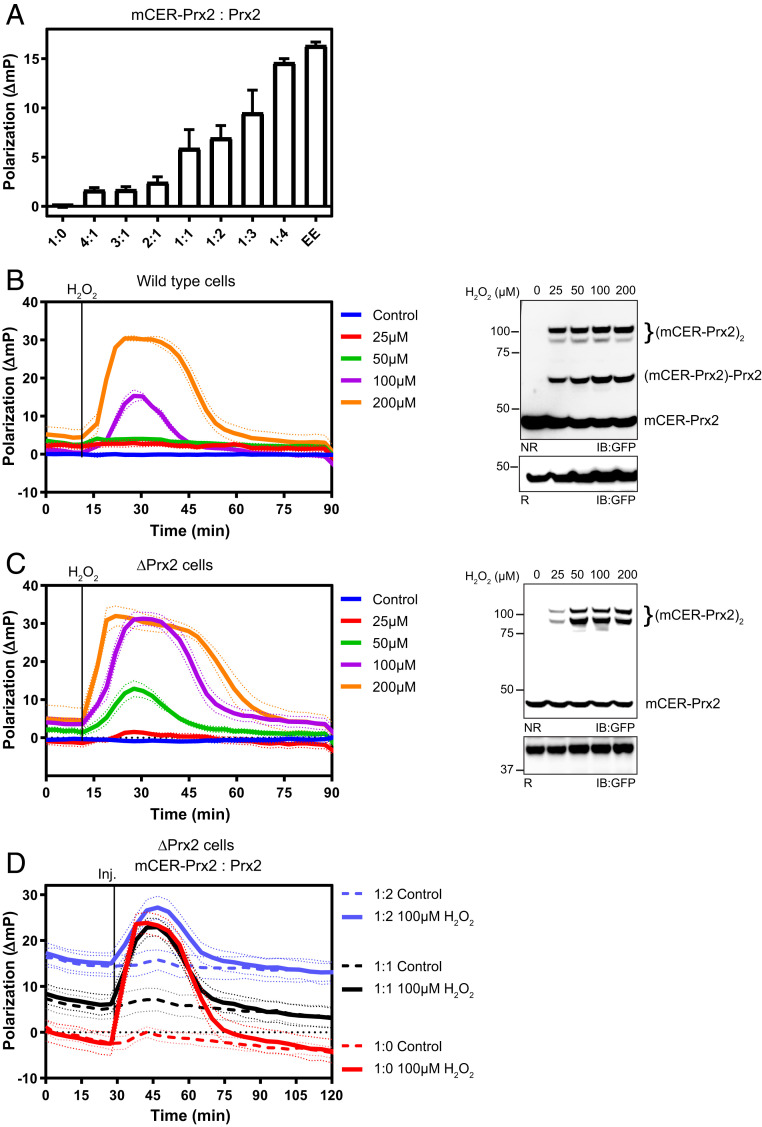Fig. 2.
Heterooligomerization of the probe with endogenous Prx2 determines the amplitude of the polarization change but does not alter the onset or duration of the response. (A) Polarization associated with recombinant mCER-Prx2, mixed with Prx2 at different ratios, under decamer stabilizing conditions. EE denotes the mCER-Prx2(T82E,A85E) mutant, which does not form decamers and therefore only supports minimal depolarization. The bars indicate the mean ± SEM. (B, Left) H2O2-dependent polarization responses of WT HEK293 cells transiently transfected with mCER-Prx2. (B, Right) Corresponding anti-GFP immunoblot, 5 min after H2O2 exposure. NR/R: non-reducing/reducing gel electrophoresis. (C, Left) H2O2-dependent polarization responses of ΔPrx2 cells transiently transfected with mCER-Prx2. (C, Right) Corresponding anti-GFP immunoblot, 5 min after H2O2 exposure. (D) H2O2-dependent polarization responses of ΔPrx2 cells transiently cotransfected with mCER-Prx2 and Prx2 at different ratios. All graphs in this figure are based on n = 3 biological replicates with six technical replicates each. All immunoblots in this figure are representative of n ≥ 3 experiments.

